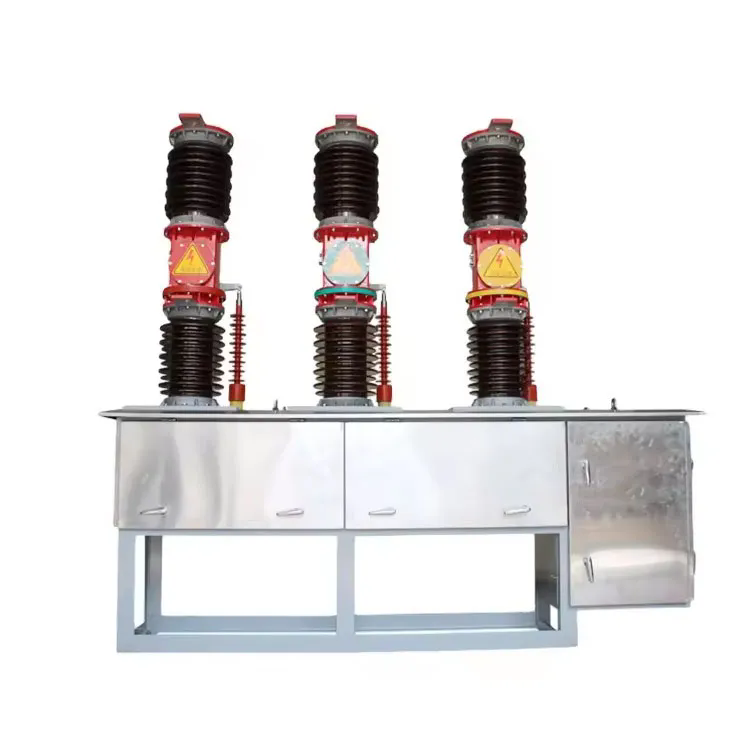Why Is the Vacuum Circuit Breaker the Future of Electrical Safety?
2024-12-03
In today’s increasingly complex world of electrical systems, safety, reliability, and efficiency are more important than ever. Among the many innovations in electrical engineering, the vacuum circuit breaker (VCB) stands out as a cutting-edge technology designed to enhance performance and protect electrical systems. But why is the vacuum circuit breaker considered the future of electrical safety?
What Is a Vacuum Circuit Breaker?
A vacuum circuit breaker is a type of circuit breaker that uses a vacuum as the medium to extinguish the arc formed when a circuit is interrupted. Unlike traditional circuit breakers that rely on air, oil, or gas to quench the arc, a VCB uses a sealed vacuum chamber where the absence of gas or air provides superior insulation and arc-extinguishing properties.
When a fault occurs, the vacuum interrupter in the breaker separates the electrical contacts. The arc formed during this separation is quickly extinguished within the vacuum due to the absence of particles that can sustain ionization. This makes the VCB not only highly effective but also more efficient and durable than other circuit breakers.
The Benefits of Vacuum Circuit Breakers
1. Exceptional Arc-Extinguishing Capability
The vacuum chamber in a VCB is an excellent medium for interrupting arcs because it eliminates the conditions necessary for an arc to sustain itself. This results in quicker interruption of faults, reducing the risk of damage to the electrical system.
2. Enhanced Durability and Longevity
Vacuum circuit breakers are designed for minimal wear and tear. The lack of a medium like oil or gas reduces maintenance needs, while the durable construction of the vacuum interrupter ensures a long operational life. This makes VCBs ideal for applications requiring high reliability and low maintenance.
3. Environmentally Friendly
Unlike some circuit breakers that use gases such as SF6 (a potent greenhouse gas), vacuum circuit breakers are environmentally friendly. They do not emit harmful substances during operation and have a smaller environmental footprint.
4. High Efficiency and Low Power Loss
The compact design and efficient operation of VCBs result in lower power losses during operation. This improves overall system efficiency and reduces energy costs, making them a cost-effective choice for long-term use.
5. Compact and Lightweight Design
Vacuum circuit breakers are smaller and lighter than traditional options, making them easier to install and integrate into modern electrical systems. Their compact nature is especially advantageous in applications where space is a constraint.
Common Applications of Vacuum Circuit Breakers
Vacuum circuit breakers are versatile and widely used in a variety of settings, including:
- Power Distribution Systems: VCBs are commonly installed in medium-voltage and high-voltage distribution systems to ensure reliable protection against overloads and short circuits.
- Industrial Plants: Their ability to handle heavy electrical loads makes VCBs suitable for industrial settings, where they protect machinery and equipment from electrical faults.
- Renewable Energy Systems: With the growing adoption of renewable energy, VCBs are being used to protect solar farms, wind turbines, and other renewable installations due to their efficiency and reliability.
- Railway Electrification: In rail systems, VCBs play a crucial role in ensuring safe and efficient operation by protecting power supplies and signaling systems.
Key Features of Vacuum Circuit Breakers
- Rapid Response: VCBs interrupt electrical faults almost instantaneously, minimizing the risk of damage to systems and equipment.
- Low Maintenance: With fewer moving parts and no need for regular refilling of gases or oils, VCBs require significantly less upkeep than other types of breakers.
- High Insulation Strength: The vacuum provides superior insulation properties, making VCBs effective in high-voltage applications.
Challenges and Considerations
While vacuum circuit breakers offer numerous advantages, there are a few challenges to consider:
1. Higher Initial Cost: The upfront cost of a vacuum circuit breaker can be higher compared to traditional options. However, the long-term savings from reduced maintenance and energy efficiency often outweigh this initial expense.
2. Limited to Medium Voltage Applications: While VCBs are highly effective in medium-voltage systems, they may not always be the best choice for low-voltage or ultra-high-voltage applications.
Why Are Vacuum Circuit Breakers the Future?
As electrical systems become more complex and demand for sustainable solutions grows, vacuum circuit breakers are emerging as the preferred choice for modern applications. Their high efficiency, durability, and eco-friendly design align with global efforts to create safer and more sustainable electrical infrastructures.
Moreover, advancements in technology are continuously improving the performance of VCBs, making them suitable for an even broader range of applications. For industries seeking reliability and reduced environmental impact, the vacuum circuit breaker is undoubtedly a game-changer.
Conclusion
Vacuum circuit breakers represent a significant leap forward in electrical safety and efficiency. Their superior arc-extinguishing properties, long lifespan, and eco-friendly nature make them an excellent choice for various applications. Whether you’re upgrading an industrial power system, installing renewable energy solutions, or enhancing the safety of your distribution network, the vacuum circuit breaker offers unparalleled benefits.



